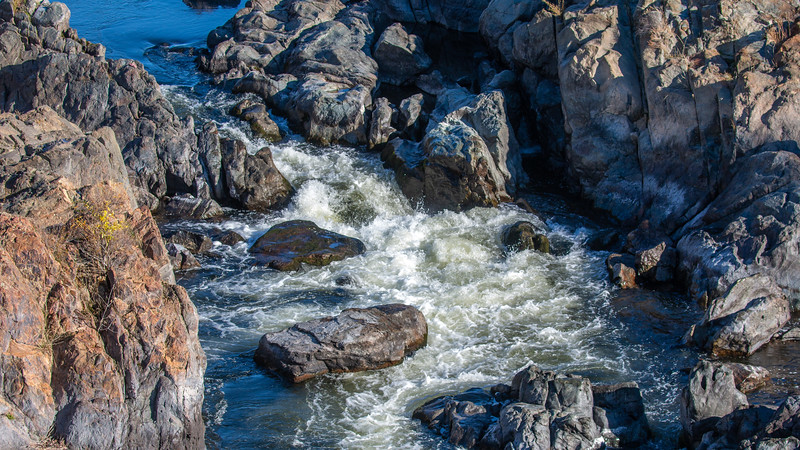
Local experts on water and water use like Vance Kennedy were apoplectic when farmers planted almonds and walnuts in the foothills of eastern Stanislaus County, where one of the last viable aquifers in the San Joaquin Valley provided enough groundwater for tens of thousands of acres of trees.
“That aquifer should be saved for use in an emergency,” said Kennedy, a retired hydrologist formerly with U.S. Geological Survey.
Today, obeying simple physical law, that same aquifer has dropped anywhere from fifty to almost one-hundred feet over the last ten years, depending on where it’s measured and by whom.
Many of those who defended planting the foothill orchards argued that there was plenty of surface water from the Stanislaus River to serve even more trees. That argument may have been technically accurate, but, over time, it has proven hopelessly optimistic.
Yes, in some years the Stanislaus River provides Oakdale (OID) and South San Joaquin Irrigation (SSJID) Districts more water than they need to serve in-district demands, but both districts have decided to send their so-called “surplus” water south instead of serving prospective buyers within their spheres of influence, including most owners of the foothills orchards. The result has been an ever-declining aquifer.
OID water sales in particular haven’t just rankled foothills farmers who’d like to purchase local surface water instead of pumping from the aquifer, they’ve also brought about lawsuits when OID’s fallowing programs and water sales failed to observe protocols required by the California Environmental Quality Act (CEQA). OID and SSJID most recently are proposing a sale to Westlands Water District that is likely to bring about even more consternation and outrage than usual.
With a proposal to sell 100,000-acre feet of water to Westlands Water District at $250 an acre-foot, OID and SSJID seem to be offering local water to Westlands at far below the going market rate. Westlands is a favored customer of districts with water to sell because it is at the same time the largest agricultural water district in the United States and also a district with no water rights.
In November of last year, Westlands notified its members that the delivered cost of water would range from $680 to $710 an acre-foot. That’s significantly more than the $250 an acre-foot listed in the proposed sale by OID and SSJID. If multiplied by 100,000-acre feet, it’s tens of millions of dollars more.

Moreover, by selling water at bargain basement prices during a severe groundwater decline in their own basins, the two districts seem to be defying guidelines set down by California’s Sustainable Groundwater Management Act (SGMA). According to the state’s Department of Water Resources, SGMA requires,
“Governments and water agencies of high and medium priority basins to halt overdraft and bring groundwater basins into balanced levels of pumping and recharge. Under SGMA, these basins should reach sustainability within 20 years of implementing their sustainability plans. For critically over-drafted basins, that will be 2040. For the remaining high and medium priority basins, 2042 is the deadline.”
As groundwater basins continue to decline statewide, the driving assumption that “groundwater management in California is best accomplished locally” is beginning to look misguided. In Stanislaus County, where the last great aquifer in the San Joaquin Valley is steadily declining, local leaders carp about state “water grabs” while remaining studiously silent about water sales that have more damaging effects on local groundwater basins than state requirements for reduced flows along the Tuolumne River.
With fallowing of hundreds of thousands of acres looming in the near future, the southern San Joaquin Valley is less and less viable for agriculture, especially considering the rushing onset of climate change. Instead of learning from the example of their southern counterparts, authorities in the northern part of the Valley seem bent another race to the bottom of their own groundwater basins. How long before the state realizes its error of expecting local authorities to achieve sustainability and steps in with draconian measures to halt groundwater depletion?

Based on the amount of precipitation so far in the winter of 2020-2021, a new drought has begun. The monetization of water that will be needed to carry the local community through the current weather event should not be permitted.
The amount of rainfall we average annually in the Valley is that of a desert climate. Exporting water from a desert to serve another part of a desert is foolish,
Right on, Bruce.
I, without any effort on my part, am able to return to the exact moment when I learned, in an Environmental Science course, of the estimated time and measurement of rain fall necessary to replenish a single inch of water back into the ALREADY depleated water tables. I can never forget, NOR do I want to forget.
The literal shock that crept through me, after viewing maps of the water tables in California was a blessing. Immediately, after, I could not help but to search for the nearest water tables in the states adjacent to California.
Upon seeing how bleak our water future looked, a reaction came over me to want to shout from the roof tops, for everyone to hear, of the sheer danger WE ARE IN, waterwise.
That knowledge came approximately 30 years ago. I did not shout, and neither have we been anything but wise about our use of water…
In 2014, or there abouts, I, personally, stood before decision makers in Oakdale to plead with them to be wise when making future plans for water. Obviously, although they wagged their heads in agreement of what I said, nothing wise was ever followed through on…
Our (we are all in this together) propensity, is to live as if nothing is wrong.
YET, multiple things are terribly wrong.
People can supposedly fast without food for up to 40 days, BUT without water 3 days. Water thus holds much greater significance…
OID shames itself doing as it does with water as precious as it is, especially knowing the buyer will sell at a much higher price to its own members. The greed of the buyer reveals the truth of the value placed on water by its members. Will OID learn a lesson?
What price will anyone extract if there is no more water to sell?
I do not want to pay the true cost of water, YET, we get it so cheap, every month, that the average valley citizen hardly gives its a second thought, even when water use rules are imposed.
The general attitude seems to ask a groupthought question: “Who is going to know?” To which I think, “Our children know, our neighbors know, we ourselves know.” We are not REALLY escaping eminent danger, we are setting the stage for others to think it is okay to cheat. Until cheating catches up on us all…
I am in process of learning the advantageous of Dry Farming. Check it out.
Two typos above in my reply.
Correction as follows:
Paragraph 4: ….neither have we been the wisest about our water use.
Paragraph 13: …..in the process of learning the advantageous steps of Dry Farming.
The Turlock Irrigation District has opened up it’s draft Ag Water Management Plan (AWMP) for comment. This plan is updated every 5 years. Take a look at it. Our groundwater is going away at an accelerating pace.
At some point very soon everyone in the region will be aware that planning need much more public involvement in order to avoid adverse outcomes.
Your water bill will go up at rates never seen in history. Less water and lower quality for all but the wealthy and politically connected.
In the meantime those that benefit from status quo benefit from the “planning” done without public involvement.
Thank you for this article, Eric. The issue is of utmost importance, and will intensify in the future. Dr. Kennedy is right. The aquifer should be left alone and saved for absolute emergencies. And I loved your observation that, “local leaders carp about state “water grabs” while remaining studiously silent about water sales that have more damaging effects on local groundwater basins than state requirements for reduced flows along the Tuolumne River.s” Very well said. I also agree that decisions on groundwater cannot be left to local authorities, due to their self-interest and =tendency to base decisions on immediate needs rather than a view of what is sustainable long-term.
Thanks for the article, but , what a sad sack.
The rich get richer the rest pay the freight.
I’ve been beating this drum for what seems like forever.
I have obvious connections to the Delta and less obvious connections to Modesto.
Either way the end result is the same.
Well entrenched, big money players, run for the local water board and presto bang ! We’re selling water out of the district.
Who benefits ? Gee shucky darn. Follow the money.
Where are the old timers ?
I don’t mean the Gallo’s.
I mean the other locals who have decades invested in this town.
What the hell are you waiting for ?
Why am I putting myself out there ?
What the the hell do I care ?
Gee, I’d like to be able to catch fish in the Delta.
How come no one sees the disconnect ?
Wake the hell up folks.
They’re about to seriously screw this up for YOUR next generation.
If you think they have your best interests in mind you need to smoke another joint or have another beer or gosh maybe Kendall Jackson is your preference.
What’s the party line ?
“What’s the word ? Thunderbird”
How’s that workin’ for ya ?